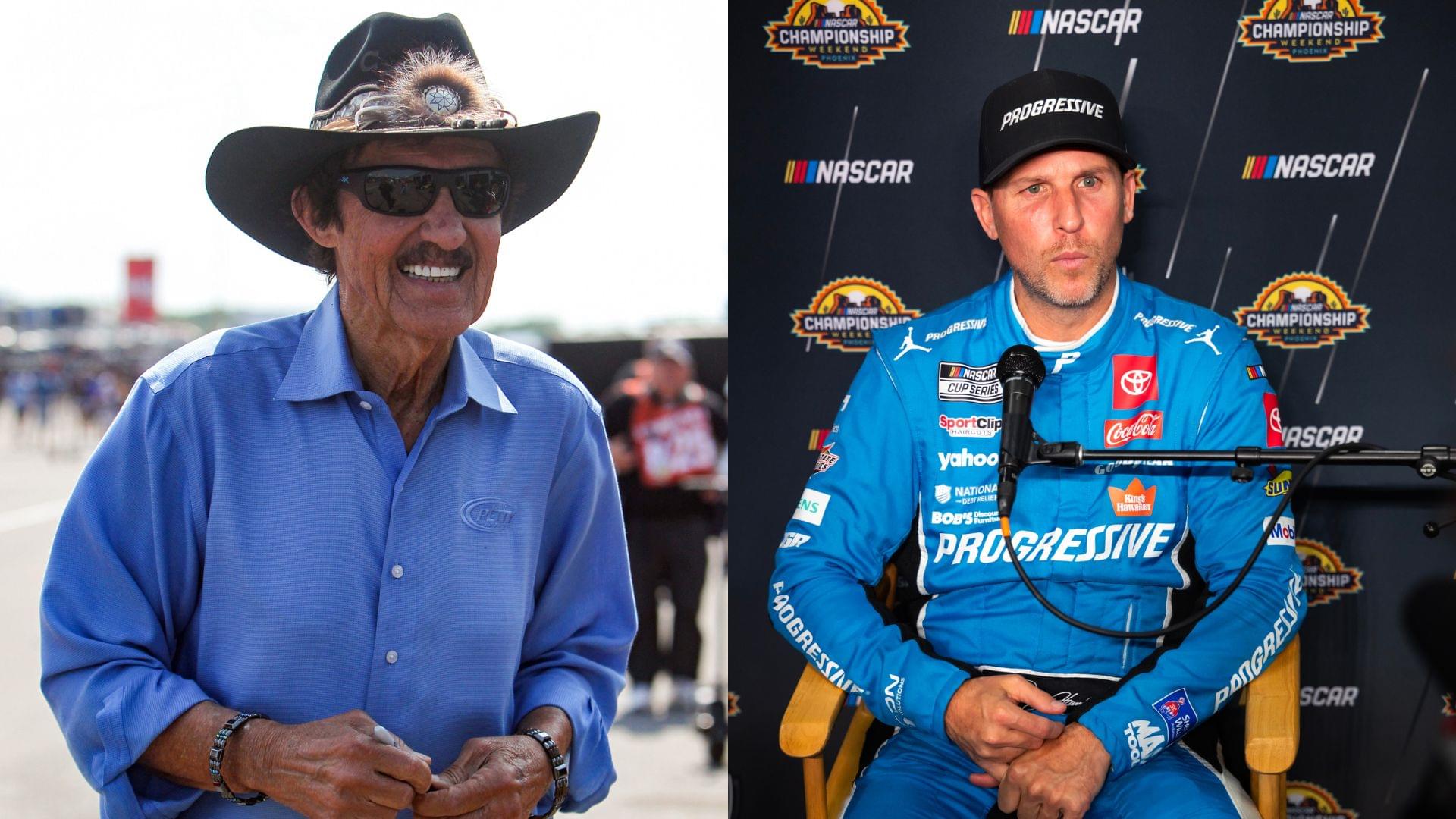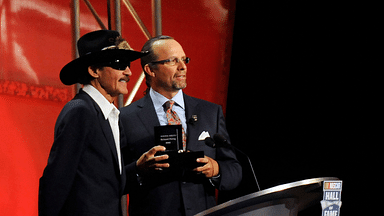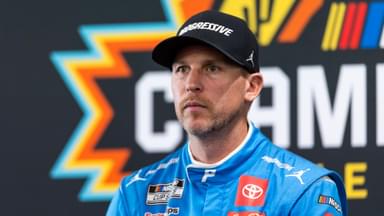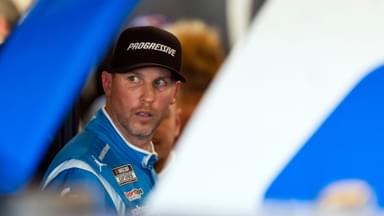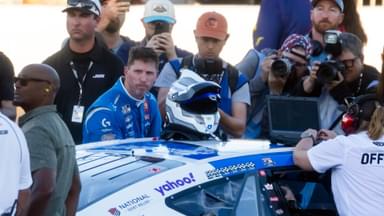When Denny Hamlin’s championship hopes were dashed in the final laps at Phoenix, fingers were pointed at the decision to call for four fresh tires instead of two. Hamlin was just three laps away from realizing his dream, and the gamble from the No. 11 Joe Gibbs Racing pit box became the talk of the NASCAR world. Yet, amid the post-race scrutiny, one voice of authority stood firmly in Hamlin’s corner – Richard Petty.
Advertisement
The seven-time NASCAR Cup Series champion sat down with longtime collaborator Dale Inman to break down the strategy and dissect the chaotic ending of the 2025 finale. Far from joining the critics, Petty defended Hamlin’s decision and praised his execution on track. “If he hadn’t got blocked by those couple, I mean, he would have beat the #5, not won the race. He made the right decision. Traffic just didn’t allow him to take advantage of the four tires.”
As far as Petty was concerned, Hamlin’s drive at Phoenix was nothing short of textbook. He described the veteran as “classic” behind the wheel, asserting that nobody in the field matched his command of the track that afternoon. Hamlin was good on brand new tires, Petty opined. However, by the end of a long run, he had slowed down.
Hamlin was behind a bunch of cars quicker than his, but it didn’t make any difference.
The Hall of Famer broke down the final pit stop sequence from a racer’s point of view. “When they had to make a pit stop, everybody got two tires except the #11 car, and he got four car tires,” he said.
Petty further pointed out how the restart setup dictated much of what followed. “When NASCAR threw the green flag, the #11 was on the inside, the #5 was on the outside. When they went into the number one corner, Hamlin was beside him. Even though there were a couple of cars between them, when he got down in there, he got blocked.”
Petty also gave Kyle Larson his flowers for seizing the moment, pointing out that the other drivers went off into the corner and ran straight through the middle. In doing so, the No. 11 car was closing in but got trapped again, suggesting that traffic and circumstance, not strategy, ultimately sealed Hamlin’s fate.
In Petty’s view, Hamlin played his cards right, but luck simply didn’t fall his way. The four-tire call, painted as a blunder, was instead a masterstroke undone by timing and congestion.
Petty and Inman suggest the rule changes that can be implemented to make NASCAR racing better
Back in Petty and Inman’s heyday, when the checkered flag waved, the race was over. There was no overtime, no green-white-checker drama. But in the modern NASCAR era, that’s no longer the case. Races now often stretch into multiple overtimes, sometimes three or four, in case chaos breaks out anywhere in the pack. A single spin at the front or a crash in the back can suddenly tack on extra laps, rewriting the script at the last possible moment.
Petty, who has seen every evolution of the sport, didn’t mince words about it. “If you’re going to run a race, it needs to be a deal, not just somebody that’s really good on a one-lap set of tires, but that’s the way… Hopefully they’ll change it next year, and I don’t know they’re going to change that, but the point stand definitely needs to be changed.”
As per the King, championships shouldn’t hinge on a one-lap gamble. He believes the structure must reward consistency across the full distance, not just those who luck into fresh rubber at the end of a caution-heavy shootout.
Inman, his longtime crew chief and confidant, echoed the sentiment but offered a more calculated solution. To him, NASCAR needs a formula, a standardized approach that keeps overtime fair without compromising strategy.
Inman explained with an example, stating that at Martinsville, which is a 500-lap race, if they go overtime, they should have 10 laps where, if someone needed gas, they could come in and get gas and then race for it. And five laps in Phoenix and two laps at Daytona and Talladega.
As Petty hinted, a race should test skills, not just a driver’s ability to capitalize on a one-lap dash, as overtime should enhance the finish, not redefine the race.

